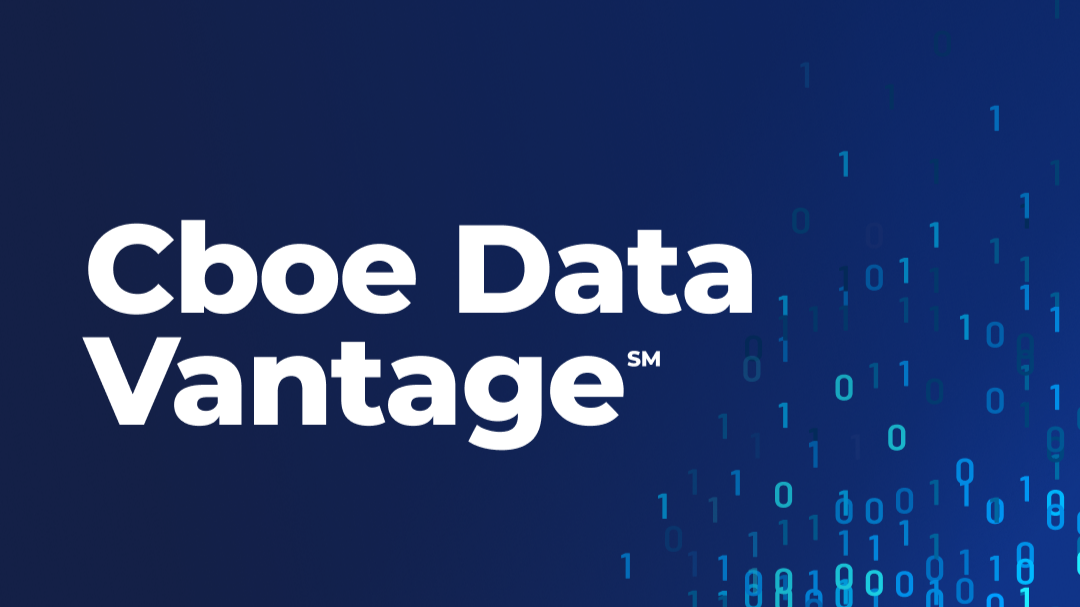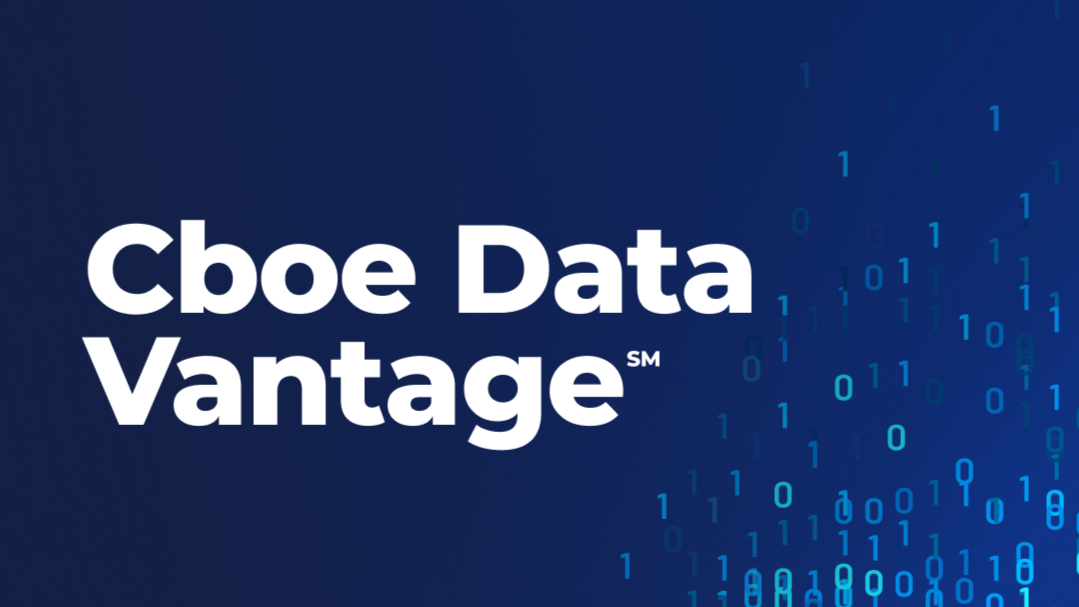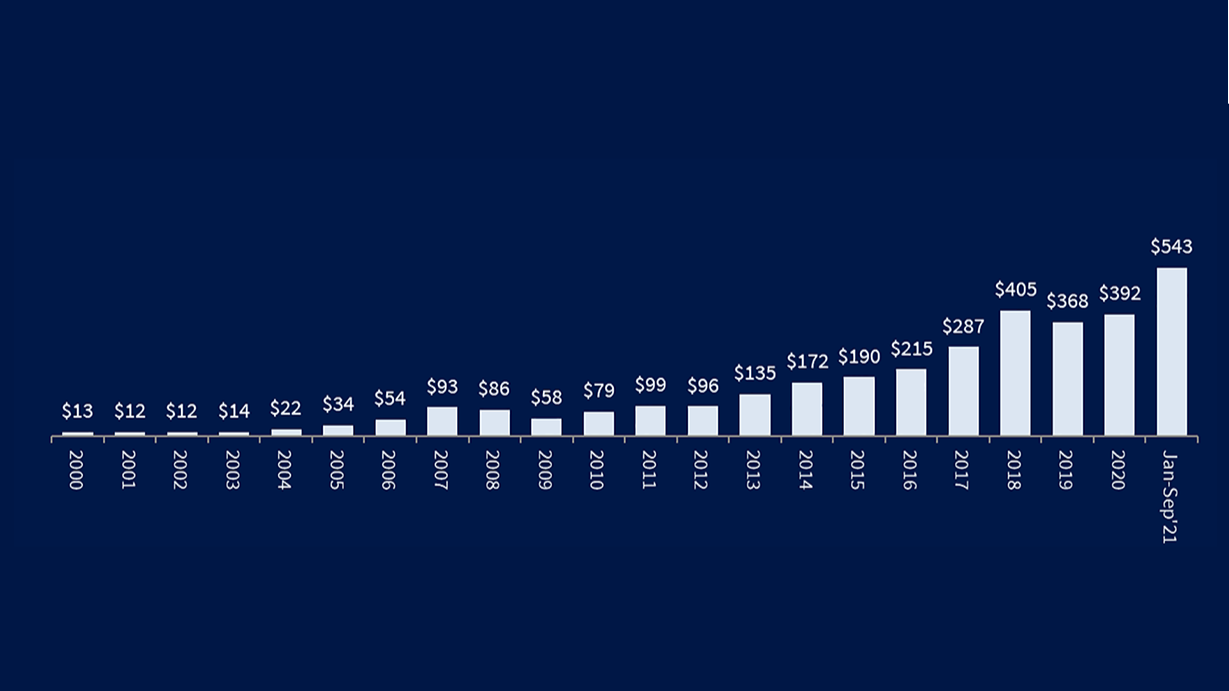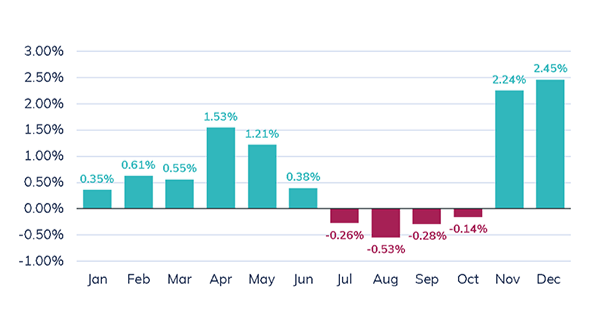Data Analytics and Indices

Trending
Index Insights: August
There were solid results for broad-based equity indices in August as mixed performance among Magnificent Seven (Mag7) highfliers were offset by strength in small caps and lower profile sectors including Health Care, Energy and Financials.
Read MoreThere were solid results for broad-based equity indices in August as mixed performance among Magnificent Seven (Mag7) highfliers were offset by strength in small caps and lower profile sectors including Health Care, Energy and Financials. This led to a significant outperformance in the Russell 2000® Index (RUT), which rose 7% to 2,366 while the S&P 500® Index (SPX) increased 1.9% to 6,460. Although realized volatility ticked up from single-digit July lows to nearly 11%, implied volatility was muted, with the Cboe Volatility Index® (the VIX® Index) only topping 20 on the first day of the month and closing out the month at 15.36.
Such conditions boosted premium writing indices involving both puts and calls, including the Cboe Validus S&P 500® Dynamic Call BuyWriteSM Index (CALD) which was up more than 2%, and the Cboe Validus S&P 500 Dynamic PutWrite Index (PUTD) which increased 1.4%. The best performance involved the Russell 2000 complex of indices, including the Russell Daily Covered Call Index (RTYDCC) which was up 4.27% and the Cboe Russell 2000 PutWrite Index(PUTR) which was up more than 4.6%, among the best monthly results in recent years.
While low volatility and broad gains characterized equity index performance. In contrast, the crypto segment faced headwinds after hitting all-time highs mid-month. The Cboe Bitcoin U.S. ETF Index (CBTX) declined 7.3% in August, though it remains up more than 15% year-to-date.
Equity Indices
Source: Cboe Global Markets
The Cboe S&P 500 Index option contract, known by its symbol SPX, is designed to track the underlying S&P 500 Index and help investors achieve broad market protection. SPX® options offer the potential opportunity to manage large-cap U.S. equity exposure and execute risk management, hedging, asset allocation, and income generation strategies. The Cboe S&P 500® Equal Weight Index (SPEQX) option contract is the equal-weight version of the widely-used S&P 500 divided by 10.0. The index includes the same constituents as the capitalization weighted S&P 500, but each company in the Cboe S&P 500 Equal Weight Index is allocated a fixed weight - or 0.2% of the index total at each quarterly rebalance. The Russell 2000 Index (RUT) measures the performance of small-cap segment of the U.S. equity universe. It is a subset of the Russell 3000® Index and includes approximately 2000 securities based on a combination of their market cap and current index membership. RUT options are valuable tools for increasing yields and managing risk.
Volatility Indices
Source: Cboe Global Markets
The VIX® Index is based on real-time prices of options on the S&P 500 Index (SPX) and is designed to reflect investors' consensus view of future (30-day) expected stock market volatility. Cboe 1-Day Volatility Index® (VIX1D) estimates expected volatility by aggregating the weighted prices of P.M.-settled S&P 500 Index (SPX) puts and calls over a wide range of strike prices. The Cboe 3-Month Volatility IndexSM (VIX3M) is designed to be a constant measure of 3-month implied volatility of the S&P 500 (SPX) Index options.
Dispersion and Correlation Indices
Source: Cboe Global Markets
The Cboe S&P 500 Dispersion Index (DSPXSM) measures the expected dispersion in the S&P 500 Index over the next 30 calendar days, as calculated from the prices of S&P 500 Index options and the prices of single stock options of selected S&P 500 Index constituents, using a modified version of the VIX® methodology. The Cboe S&P 500 Implied Correlation Indices, including COR1M and COR6M, are the first widely disseminated market estimates of the average correlation of the stocks that comprise the S&P 500. The Cboe S&P 500 Implied Correlation Indices offers insight into the relative cost of SPX options compared to the price of options on individual stocks that comprise the S&P 500.
BuyWrite Indices – Equity
Source: Cboe Global Markets
The Cboe® MSCI Emerging Markets BuyWrite Index (BXEFSM) is a benchmark index designed to track the performance of a hypothetical buy-write strategy on the MXEF index. The Cboe S&P 500 BuyWrite IndexSM (BXMSM) is a benchmark index designed to track the performance of a hypothetical buy-write strategy on the S&P 500 Index. The Cboe S&P 500 Half BuyWrite IndexSM (BXMHSM) is a benchmark index designed to track the performance of a hypothetical covered call strategy. The BXMH Index is similar in design to the Cboe S&P 500 BuyWrite Index (BXM). However, the difference in methodology is as follows: the strategy only writes half a unit of an ATM monthly SPX call option while the long SPX Index position remains unchanged. The Cboe Validus S&P 500 Dynamic Call BuyWrite Index (CALD) tracks the value of a hypothetical rules-based investment strategy which consists of overlaying a basket of S&P 500 a.m.-settled standard expiry short call options over a long position invested in the S&P 500 with dividends reinvested (total return).
PutWrite Indices
Source: Cboe Global Markets
The Cboe S&P 500 PutWrite Index (PUT) tracks the value of a hypothetical portfolio of securities (PUT portfolio) that yields a buffered exposure to S&P 500 stock returns. The PUT portfolio is composed of one- and three-month Treasury bills and of a short position in at-the-money put options on the S&P 500 Index (SPX puts). The number of puts sold is selected to ensure that the value of the portfolio does not become negative when the portfolio is rebalanced. The Cboe Validus S&P 500 Dynamic PutWrite Index (PUTD) is designed to track the value of a rule-based investment strategy which consists of overlaying a basket of S&P 500 (SPX) a.m. settled standard-expiry short put options over a money market account invested at the 4-week daily Treasury Bill rate. The Cboe Russell 2000 PutWrite Index (PUTR) tracks the value of a hypothetical portfolio of securities (PUTR portfolio) that yields a buffered exposure to Russell 2000 Index stock returns. The PUTR portfolio is composed of an investment of $K in one-month Treasury bills and of a short position in an at-the-money puts on the Russell 2000 Index (RUT put), where K is the strike price of the put option.
BuyWrite Indices – Fixed Income
Source: Cboe Global Markets
The Cboe HYG BuyWrite Index (BXHB) is designed to track the performance of a covered call strategy with a short iShares® iBoxx® $ High Yield Corporate Bond ETF (HYG) call option expiring monthly. The Cboe LQD BuyWrite Index (BXLB) is designed to track the performance of a covered call strategy with a short iShares iBoxx $ Investment Grade Corporate Bond ETF (LQD) Call option expiring monthly. The Cboe TLT 2% OTM BuyWrite Index (BXTB) is designed to track the performance of a covered call strategy with a short iShares 20+ Year Treasury Bond ETF (TLT) Call option expiring monthly.
Target Outcome Series
Source: Cboe Global Markets
The Cboe S&P 500 Enhanced Growth Index Series (SPEN) and Cboe S&P 500 Buffer Protect Index Balanced SeriesSM (SPROSM) are part of a family of Target Outcome Indices. The Indices are designed to provide target outcome returns linked to the U.S. domestic stock market. The indices measure the performance of a portfolio of hypothetical exchange traded Flexible Exchange® Options ("FLEX® Options") that are based on the S&P 500 Index.
Protective Put Indices
Source: Cboe Global Markets
The Cboe VIX Tail Hedge IndexSM (VXTHSM) tracks the performance of a hypothetical portfolio that:
- Buys and holds the performance of the S&P 500 Index (the total return index, with dividends reinvested), and
- Buys one-month 30-delta call options on the Cboe Volatility Index. New VIX calls are purchased monthly, a procedure known as the "roll." The weight of the VIX calls in the portfolio varies at each roll and depends on the forward value of the VIX index, an indicator for the perceived probability of a "swan event."
- The weights are determined according to this schedule, and the weights applied at a particular roll date can be seen by opening the VXTH Monthly Roll Spreadsheet.
Bitcoin ETF Indices
Source: Cboe Global Markets
Cboe Bitcoin U.S. ETF Index (CBTX) options and Cboe Mini Bitcoin U.S. ETF Index (MBTX) options offer tools to hedge, capitalize on price movements, or express directional views on the world’s largest cryptocurrency without holding the asset.
- Comprised of ten listed spot Bitcoin ETFs
- Options on standard (CBTX) and mini index (MBTX), as well as FLEX options contracts
- Provides exposure to spot Bitcoin price movements through options, expanding investor access to crypto derivatives
The information herein is provided solely for informational purposes. Past performance of an index or financial product is not indicative of future results. Indices are not financial products that can be invested in directly, but they can be used as the basis for financial products (for example, without limitation, options, futures, mutual funds or exchange-traded funds) or to help manage portfolios. Nothing herein should be construed as investment advice
There are important risks associated with transacting in any of the Cboe Company products discussed here. Before engaging in any transactions in those products, it is important for market participants to carefully review the disclosures and disclaimers contained at: https://www.cboe.com/us_disclaimers/. These products are complex and are suitable only for sophisticated market participants. In certain jurisdictions, Cboe Company products are only permitted for investment professionals, certified sophisticated investors, or high net worth corporations and associations. These products involve the risk of loss, which can be substantial and, depending on the type of product, can exceed the amount of money deposited in establishing the position. Market participants should put at risk only funds that they can afford to lose without affecting their lifestyle. © 2025 Cboe Exchange, Inc. All Rights Reserved.









































































































